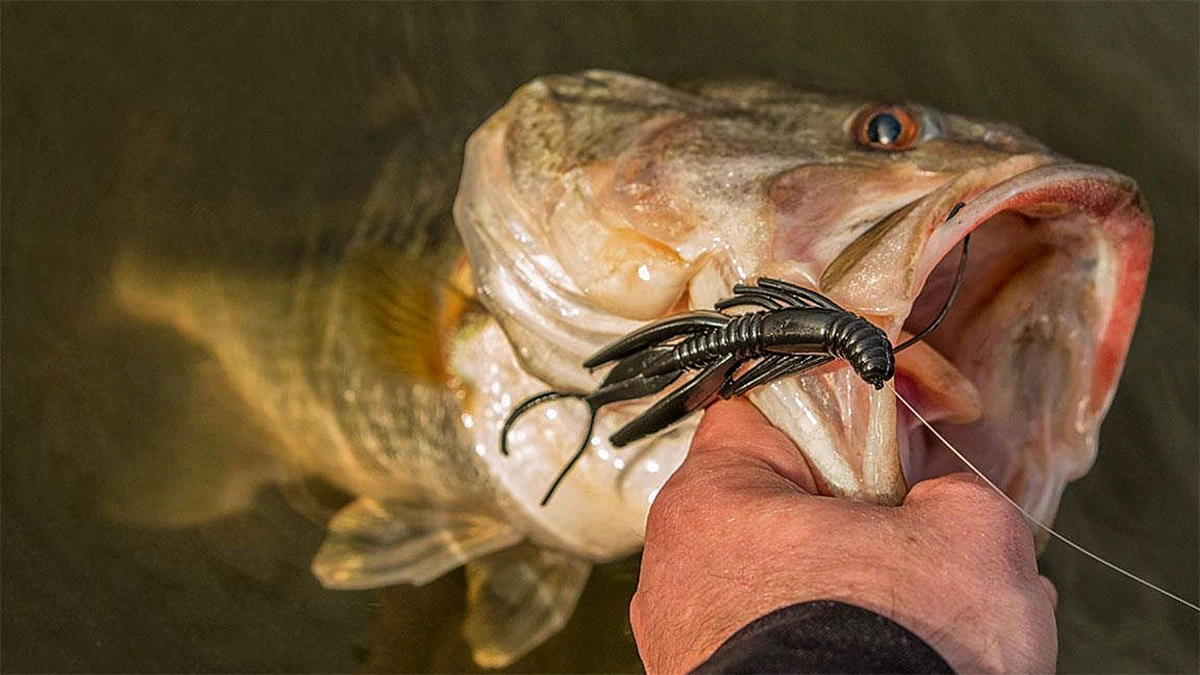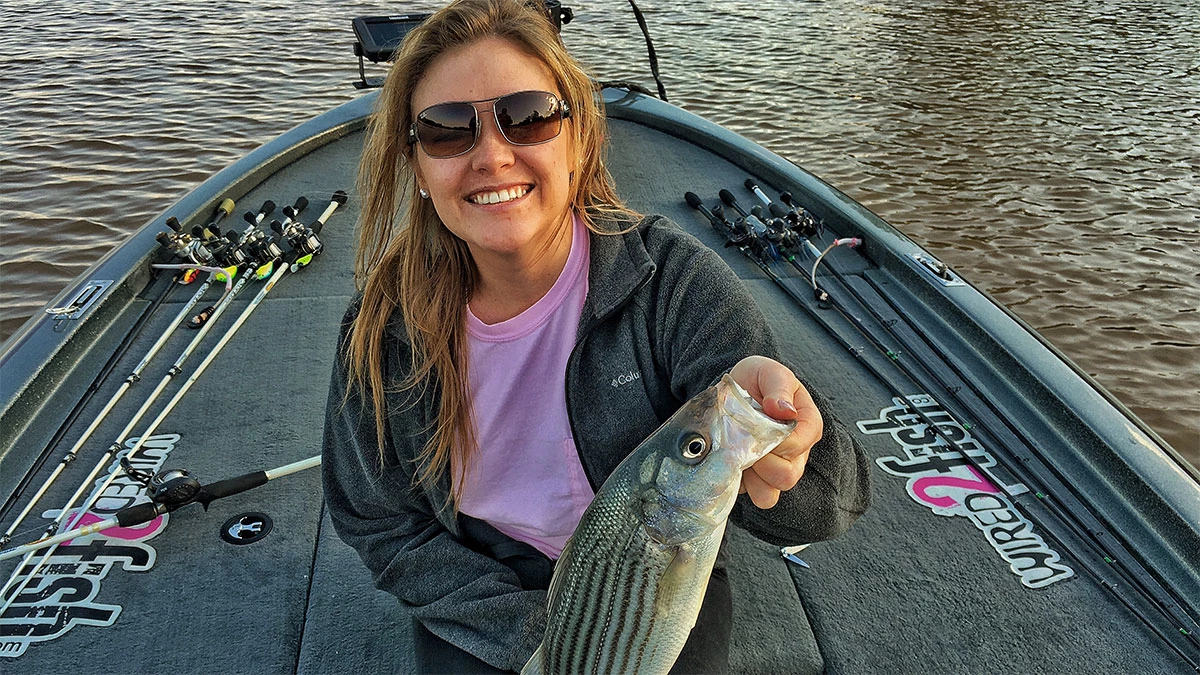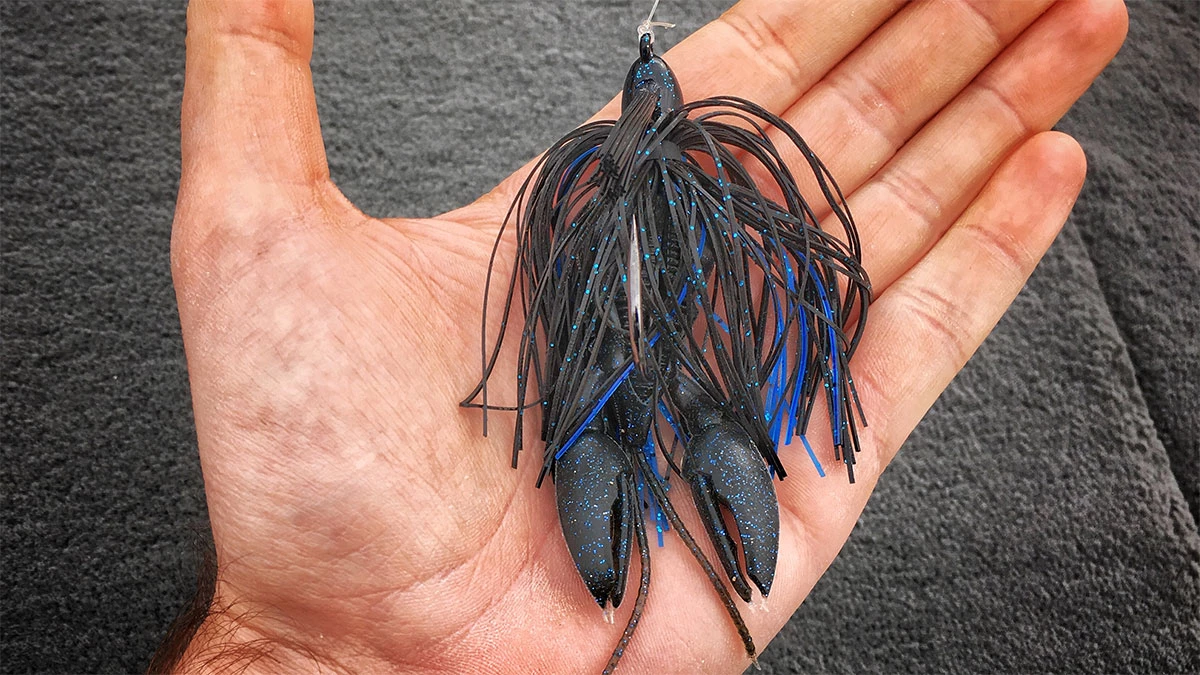I’m starting to get a little fed up right now, if I’m being honest. I have been so sick of this weather and my wife would probably tell you that I’ve been a little grumpy lately. It seems like it’s always dark, it’s always raining and there’s no baseball to watch in the evenings. I love to piddle around our property and do projects but I can’t get anything done in this nasty weather. Like you, I’m doing everything I can to keep morale somewhat high and hang in there for a little bit longer.
It’s getting old but we need to remember that spring is coming and will be here quicker than we think. Between all of the rain, darkness and cold, let’s talk about some of the things and concepts we can use during the prespawn that will help us catch some of our biggest bass of the year. I’ve been spending a lot of time reflecting on prespawn seasons of the past and I’ve come up with three really important things we all need to remember this year.
Don’t let linesides spook you from a spot
This might seem like a pretty weird-sounding subheading so allow me to quickly clarify: Maybe it’s a regional thing, but I call stripers, hybrids and white bass “linesides”. They can be a little pesky this time of year and I don’t inspect them when I catch them, but they all have lines on their sides. Hence the term “linesides”.
These three types of fish are very fast swimmers and incredibly aggressive. For the most part, they target the same prey as black bass so guess what happens? The more aggressive and less desirable species will eat your bait more times than not. I used to get really frustrated by this, especially when I fished a bunch of tournaments. With a limited amount of time on my hands, I didn’t want to deal with fighting and unhooking a bunch of spiny, wiggly fish when I had big bass I needed to catch. As a result, anytime I’d catch two linesides on a really good prespawn largemouth spot, I’d pull up my trolling motor and leave.
One day, however, I didn’t really have many other spots to hit; I wasn’t on a whole lot so I had to milk everything I had. My best spot was a shallow flat right on the side of a primary point in a large feeder creek. My wife and I pulled up there and I swear, almost every cast we made, we caught a lineside. We were using chrome-colored crankbaits and those silly linesides would eat our plugs within two cranks of the reel handle. It was a bunch of fun, we kept a few for fish tacos but still… we wanted to catch some big largemouth. The prespawn period only lasts so long and we didn’t want to blow it fooling with these linesides.
I finally backed off the spot with my trolling motor, went to an adjacent shallow pocket and put my Power-Poles down for a while to regroup, change bent treble hooks, eat a pack of crackers and strategize a little bit. This spot had always been one of my best prespawn spots and something in my gut was telling me there were plenty of largemouth in the area. So I made a change that, since that day, has continued to help me in similar prespawn situations.
I cut off everything shiny off my rods. I felt like those dang linesides were chasing the reflective patterns just like a cat would chase a laser pointer, so I opted for a more muted and opaque color pattern. Once I put a more matte-colored shad pattern on our lines, I trolled back over to the spot and started casting again. As sure as I’m sitting here at this computer, those dang linesides quit biting and the largemouth showed up. This flat had a few stumps on it and a good, hard bottom composition and those matte-colored crankbaits allowed the bass to join in on the action. Instead of catching those pesky linesides, we caught several 20-pound limits of largemouth which was one of our best days of fishing together. In the past I would have run from that spot but that small modification made a huge difference in our success. So if you’re fishing a really good-looking prespawn spot for largemouth, don’t let a few trash fish mess with your head. Put on something really dull looking and see what happens. Don’t let the cat chase the laser pointer. If you’re throwing something shiny, those suckers will go into a feeding frenzy and if you’re targeting bass, you don’t want that.
A big jig is awfully tough to beat
For whatever reason, I think folks are starting to abandon a big skirted jig in the prespawn period and I’m not quite sure why. But either way, I think it’s absolutely to their detriment. A big and bulky jig can catch some of your biggest prespawn bass of the year if you fish it in the right areas.
I’ve had most of my success targeting what I call “lead-in banks” which are the stretches of banks just inside the primary points of particular pockets. Make no mistake about it, my preference is to catch ‘em on a crankbait because it’s my favorite thing in the world but if a weird weather front moves through your area and screws up the barometric pressure, make absolutely certain to tie on a 3/8- of 1/2-ounce skirted jig with a bulky trailer on it.
You could probably get away with a lighter jig if you really wanted to, but I like the larger size so I can skip it further underneath docks and be a bit more accurate. I use a larger soft-plastic craw-imitation trailer in order to compensate for the heavier jighead; this increases water resistance and helps the jig fall slower which helps match the mood of the more lethargic, cold-water bass. They don’t alway want to chase something this time of year so the fall rate of your jig is a really big deal.
Because of the excess of rain this time of year, I pretty much marry myself to a black-and-blue jig with some sort of matching trailer. I tend to do most of my damage on the front dock posts and the front edges of shoreline grass adjacent to deep water. You can certainly skip the dock walkways if you want to, but I don’t usually find ‘em there for another month or so.
Cranking isn’t as straightforward as you think
Don’t get into robot mode this time of year. This might sound weird to some of you but I’m telling you, you’re really shorting yourself if you cast your shallow-running crankbait and just mindlessly reel it back to the boat or shore. As we just discussed, these fish aren’t necssarily jumping at the chance to chase down your plug, so a littler persuasion is often needed. I’ve had a bunch of co-anglers change crankbaits 3,000 times in the back of the boat but those endless lure changes don’t make much of a difference—a retrieve change seems to do the trick more times than not.
To capitalize on the lazy nature of early prespawn bass, a sweep-and-stop retrieve is incredibly effective throughout much of the country. Instead of a straight cast-and-wind retrieve where your lure is constantly moving, you’ll find a lot of success with a slight, intermittent pause throughout your retrieve. These bass are still a little lazy so that tiny pause gives them a chance to catch up to your crankbait and attack it from behind. Because of that behavior, you need to pay really close attention to your lure’s action.
You’re not always going to feel a “thump” when utilizing this retrieve. Instead, it will likely feel like someone cut your line. That sounds weird, but let’s think about it for a second: That random pause in you retrieve allows a tracking bass to catch up to your lure and more times than not, they’re coming to eat it from behind. As they eat it from behind, they push the lure towards you which causes you to lose tension and contact with the lure. So if you’re reeling that crankbait and quickly pause it and don’t feel anything at all when you start to continue the retrieve, a bass probably has it in its mouth and is swimming directly towards you. If this happens, you need to reel as quickly as you possibly can until you feel weight on the end of your line. When you feel that weight, execute a slow, low-angled sweeping hookset to the side. I’d be willing to bet my house that fish will be hooked solid and you’ll land it without any problems whatsoever.
I know it sucks out there right now. I am sick of it and I know you are, too. But if you can find a break in the rain and heck, even a sunny day somewhere in between, use these three tips and I will personally guarantee you’ll catch more big prespawners this time of year. Keep the faith, keep your head up and try your best to stay positive. Hopefully, by the grace of God, this season will end soon and we can all get out there and enjoy the nice weather and sun.















